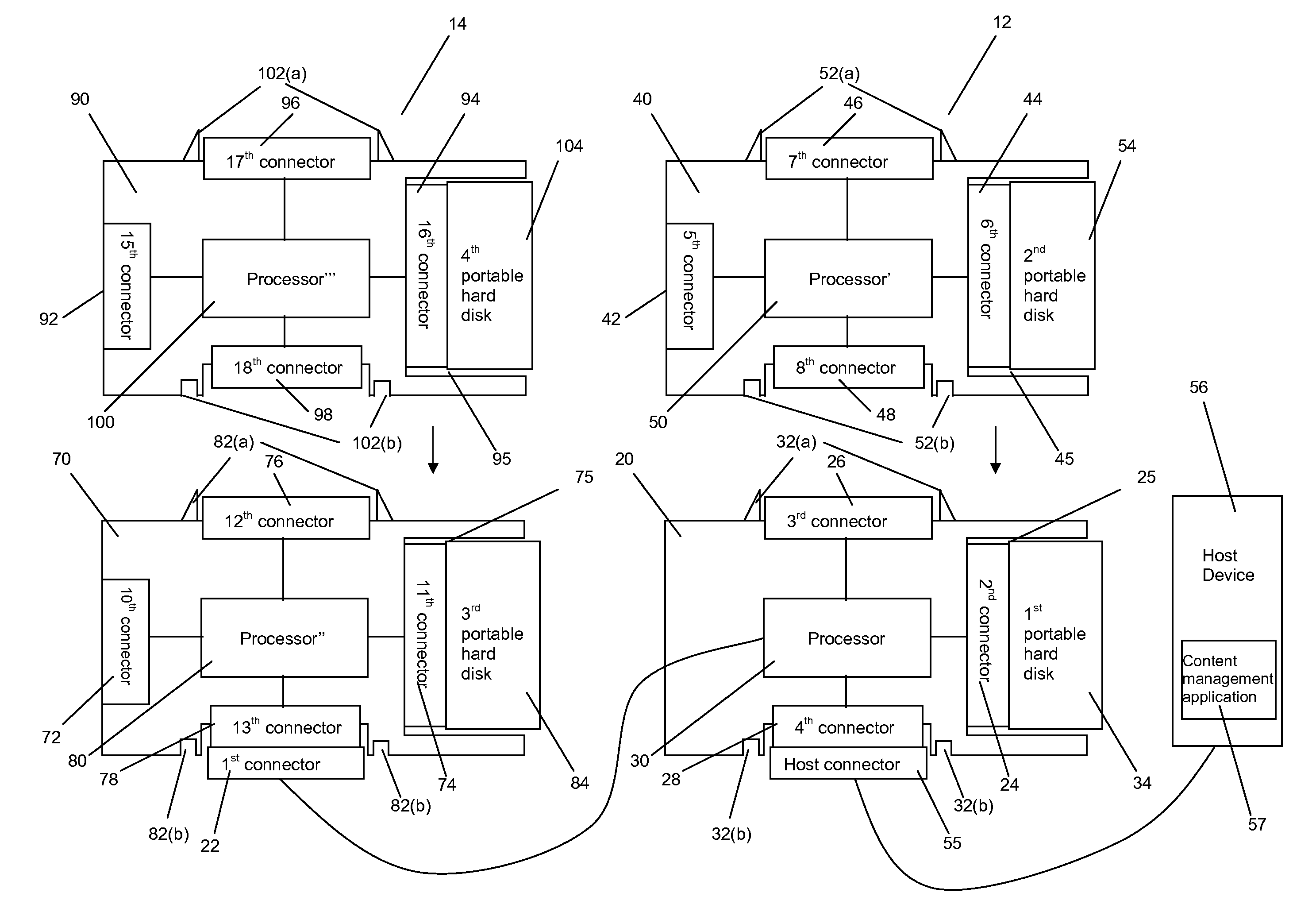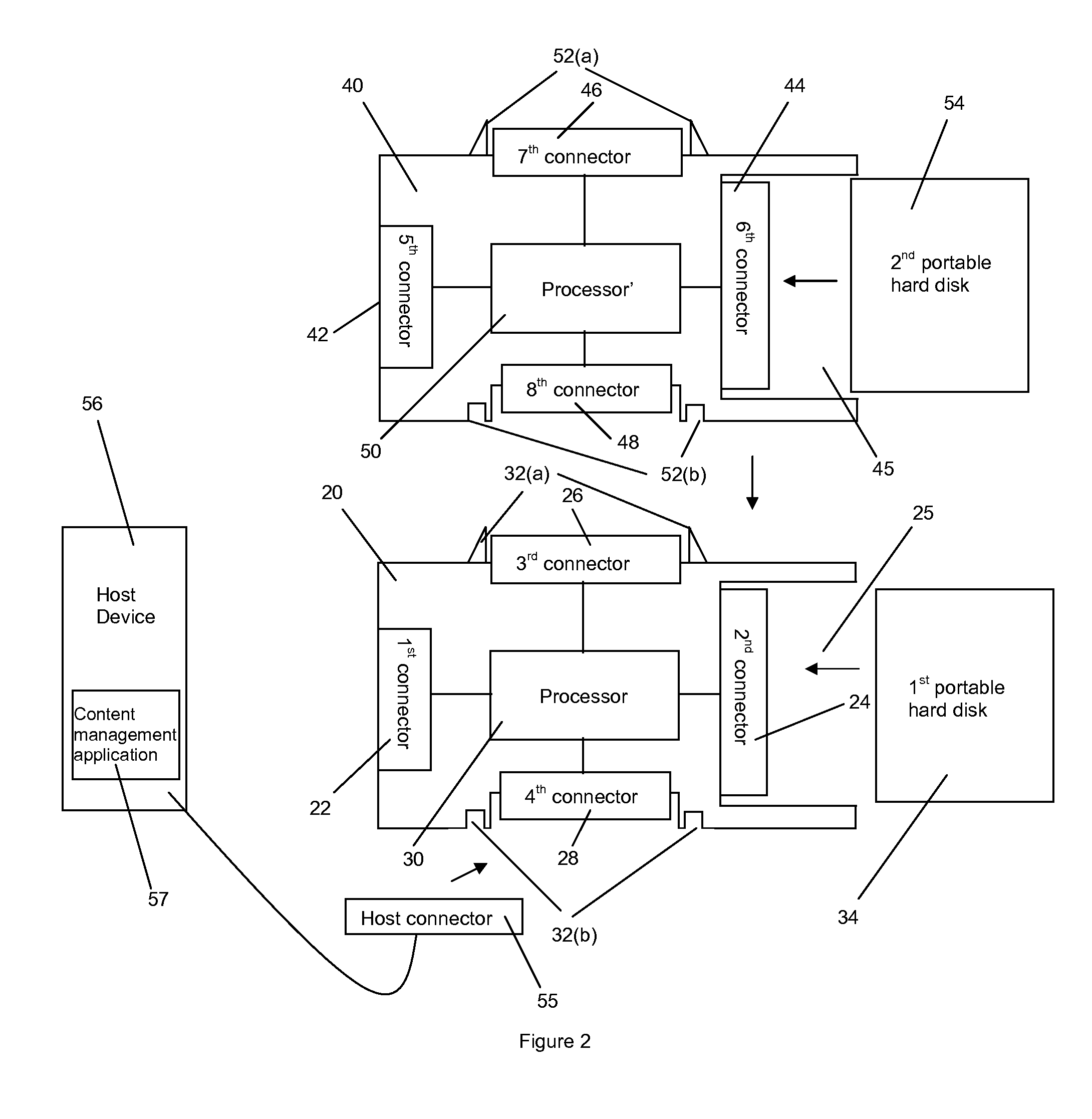Dock for a portable hard disk and a method for accessing content on a host device using the dock
- Summary
- Abstract
- Description
- Claims
- Application Information
AI Technical Summary
Benefits of technology
Problems solved by technology
Method used
Image
Examples
Embodiment Construction
Reference is made to FIGS. 1, 2 and 3 when describing a first aspect of the present invention. It should be appreciated that FIG. 1 provides an overview of an apparatus, and FIGS. 2 and 3 show applications of the apparatus during a first instance and a second instance respectively, and that details of the apparatus and application of the apparatus may differ in ways which would not substantially deviate from the present invention.
Referring to FIG. 1, there is provided a first dock 20 for a portable hard disk. The first dock 20 may be connectable to a host device. The host device may be, for example, a personal computer, a notebook computer, a network storage device, and so forth. The host device may be used for control of the first dock 20.
The first dock 20 includes at least one first connector 22, the at least one first connector 22 being for connection to another dock, with the at least one first connector 22 including both data and power connections. The at least one first connec...
PUM
 Login to View More
Login to View More Abstract
Description
Claims
Application Information
 Login to View More
Login to View More - R&D
- Intellectual Property
- Life Sciences
- Materials
- Tech Scout
- Unparalleled Data Quality
- Higher Quality Content
- 60% Fewer Hallucinations
Browse by: Latest US Patents, China's latest patents, Technical Efficacy Thesaurus, Application Domain, Technology Topic, Popular Technical Reports.
© 2025 PatSnap. All rights reserved.Legal|Privacy policy|Modern Slavery Act Transparency Statement|Sitemap|About US| Contact US: help@patsnap.com



